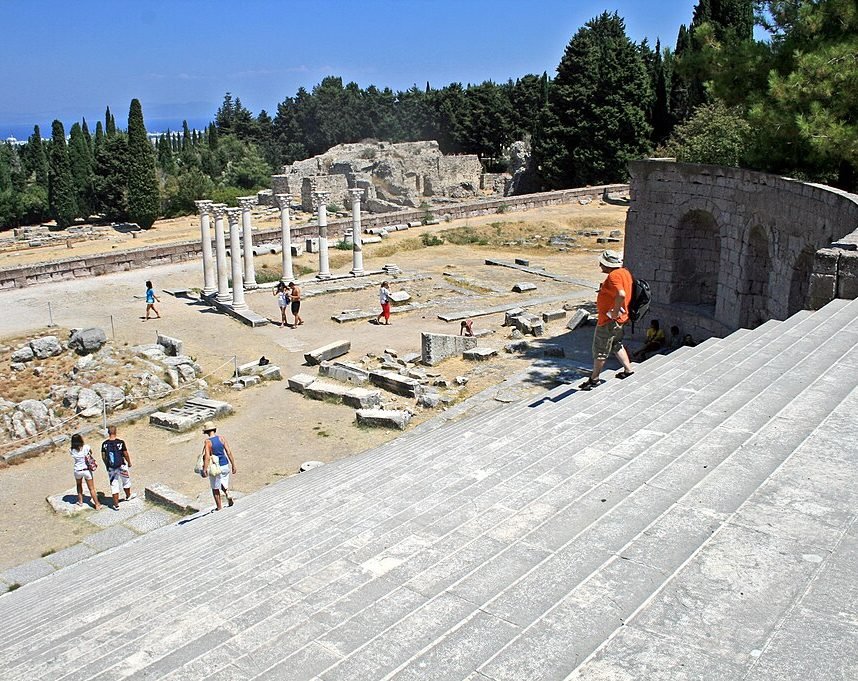Asklepion Kos, also spelled Asklepieion or Asclepieion, stands as the island’s most famous archaeological site, located just 4 kilometers southwest of Kos Town. Built in the 4th century BC, the sanctuary was dedicated to Asclepius, the ancient Greek god of healing. Over time, it developed into a major center of medicine, worship, and education. Hippocrates, the father of modern medicine, studied and taught here, making the site a cornerstone of ancient medical history.
The Asklepion spreads across three large terraces, each connected by grand marble staircases. Visitors typically start at the lower terrace and move upward, following the symbolic path of healing that ancient patients once walked. The lowest level includes Roman baths, fountains, and patient rooms. Natural springs provided fresh water for purification and hydrotherapy.
Moving up to the middle terrace, visitors will find the altar of Asklepios and remains of two important temples—one Ionic, dedicated to Asklepios, and a Roman temple honoring Apollo. This area also contains sacred spaces where priests performed rituals and cared for patients. One of the key features is the abaton, a quiet sleeping chamber where patients received healing dreams. Priests interpreted these dreams to guide treatment.
Visitors can reach the Asklepion by car, bike, taxi, or local bus from Kos Town. Free parking is available near the entrance. The site is open from 08:00 to 20:00 in summer and 08:00 to 15:00 in winter.
After exploring Asklepion Kos, travelers can visit nearby attractions such as the Plane Tree of Hippocrates, the Archaeological Museum of Kos, and the Roman Odeon. Together, these landmarks offer a deeper understanding of the island’s long connection to medicine and ancient culture.



Comment (0)